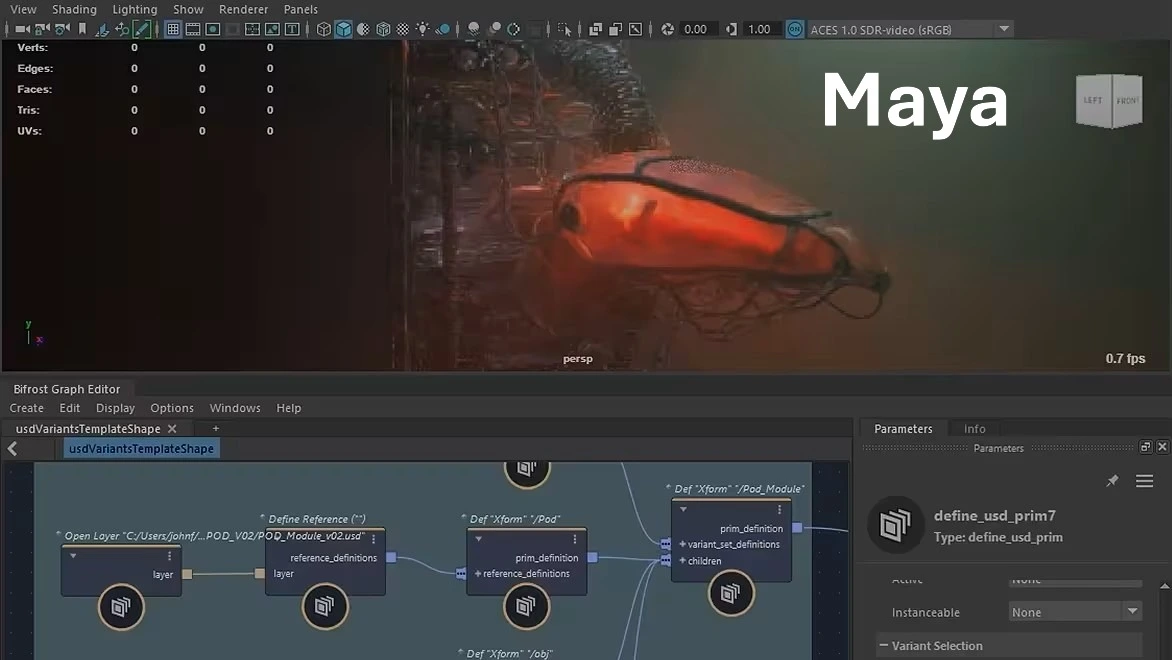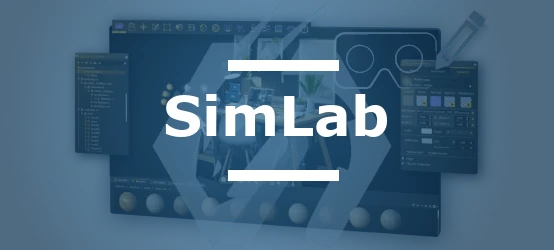
Table of Contents
- Introduction and uses of Maya
- Native formats and interoperability of Maya files
- SimLab Composer: Creating immersive experiences from Maya models
- Best practices for data exchange with Maya
- Conclusion: Optimizing Maya integration in your CAD ecosystem
Maya is a 3D graphics software developed by Autodesk that plays a key role in modern CAD interoperability. Although primarily designed for creative industries, its exchange capabilities with traditional CAD systems make it a valuable tool for many industrial sectors. This article explores in detail the interoperability mechanisms around Maya and the solutions available to facilitate exchanges with other technical environments.
Introduction and uses of Maya in the CAD ecosystem
Maya has established itself as a standard in the entertainment industry, but its use extends far beyond that today. This powerful software offers a complete set of tools for 3D modeling, animation, and rendering.
Main application areas:
- Production of visual effects for film and television
- Design of video games and virtual environments
- Architectural visualization and industrial simulation
- Virtual product prototyping
- Photorealistic renderings for product design
The convergence between the worlds of traditional CAD and artistic 3D creation is accelerating, requiring increasingly powerful interoperability bridges. Maya stands out for its ability to maintain the visual richness of models while allowing bidirectional exchanges with engineering software.
Native formats and interoperability of Maya files
Interoperability around Maya relies on its ability to read and write numerous formats, whether they are native or exchange standards. This flexibility facilitates the integration of Maya into complex multi-CAD workflows.
Maya native formats:
| Extension | Description |
|---|---|
| .MA | Maya ASCII Scene - Editable text format |
| .MB | Maya Binary Scene - Compact binary format |
| .MEL | Maya Embedded Language Script |
| .ANIM | Maya Animation File |
| .MCFP | Maya Fluid Cache Playback File |
| .MCFI | Maya Initial Fluid Cache File |
| .MP | Maya PLE Project File |
| .SKL | Maya Skeleton File |
Supported CAD exchange formats and standards:
| Extension | Description | Import | Export |
|---|---|---|---|
| CAD Formats: | |||
| .DWG | AutoCAD Drawing | ✓ | ✓ |
| .DXF | Drawing Exchange Format | ✓ | ✓ |
| .IAM | Inventor Assembly | ✓ | - |
| .IGES/.IGS | IGES Drawing File | ✓ | ✓ |
| .JT | JT Open CAD File | ✓ | - |
| .SAT | ACIS SAT 3D Model | ✓ | ✓ |
| .STEP/.STP | STEP 3D Model | ✓ | - |
| Standard exchange formats: | |||
| .FBX | Autodesk FBX Interchange | ✓ | ✓ |
| .OBJ | Wavefront 3D Object | ✓ | ✓ |
| .DAE | Digital Asset Exchange (COLLADA) | ✓ | ✓ |
| .STL | Stereolithography | ✓ | ✓ |
| .USD | Universal Scene Description | ✓ | ✓ |
| Other formats: | |||
| .AI | Adobe Illustrator Artwork | ✓ | - |
| .BIF | Bifrost Mesh Cache | ✓ | ✓ |
| .BVH | Biovision Hierarchy Animation | ✓ | ✓ |
| .EPS | Encapsulated PostScript | ✓ | - |
| .FLT | OpenFlight Scene Description | ✓ | - |
| .MTL | OBJ Material Template Library | ✓ | ✓ |
| .SPT | SpeedTree Tree Data | ✓ | - |
| .ZT | Mental Ray Image Depth | - | ✓ |
This wide compatibility makes it possible to establish bridges between Maya and the main CAD systems on the market, including AutoCAD, SolidWorks, and Inventor. Users can thus import CAD models, enhance them with Maya's creative capabilities, and then export them in their original format or to standard exchange formats such as STEP or JT.
How to optimize exchanges between Maya and CAD systems?
The transfer of data between Maya and traditional CAD software requires some precautions to preserve the integrity of the models. Here are the essential points of attention:
- Geometric data translation: When importing/exporting, ensure that the units of measurement are correctly defined to avoid scaling issues
- Geometric healing: Imported CAD models may require surface repair to function correctly in Maya
- Mesh management: The conversion between B-rep representation (used in CAD) and mesh (preferred in Maya) requires special attention
- Metadata preservation: Non-geometric information must be preserved via attributes or auxiliary files
Interoperability with Maya is part of a broader approach to technical data exchange that must address the challenges of design, simulation, manufacturing, and archiving.
SimLab Composer: Creating immersive experiences from Maya models
CAD Interop distributes SimLab Composer, a powerful solution for integration with Maya. This software acts as an intermediate layer between Maya and other applications, creating an active link that keeps the data synchronized.
Key features of SimLab Composer for Maya:
- Seamless integration: The Maya integration plugin is a free tool that facilitates design sharing between Maya and SimLab Composer
- Interactive visualization: Quickly create VR experiences from Maya models in minutes
- Realistic rendering: Fast and photorealistic rendering with different outputs (images, videos, animations, 360° images)
- 3D PDF export: Share your work by integrating 3D views into PDF files
- Texture baking: Apply materials and bake textures for realistic rendering when sharing in 3D PDF and WebGL
The plugin supports Maya 2023 and earlier versions, working on Windows and macOS. The default settings work automatically for most models, but the user retains control over the scale and vertical vector to use.
Best practices for data exchange with Maya
To optimize interoperability between Maya and other CAD systems, a few recommendations are necessary:
- Prepare models before export: Simplify complex geometries and clean up unnecessary elements
- Choose the appropriate exchange format: Favor FBX for exchanges with other Autodesk tools and OBJ/STL for universal compatibility
- Validate geometric quality: Check the integrity of surfaces and volumes after conversion
- Document transformations: Keep track of operations performed during conversion to facilitate debugging
- Use validation tools: Implement quality control processes for exchanged models
These best practices are part of a more global CAD interoperability approach that covers all the company's needs: integration, visualization, documentation, analysis, and data preparation for different uses.
Conclusion: Maya in your CAD interoperability strategy
Maya represents a valuable link in the modern CAD interoperability chain, particularly when projects require advanced visualization capabilities and photorealistic rendering. Its integration into a multi-CAD ecosystem allows leveraging its powerful animation and modeling features while maintaining consistency with other engineering systems.
With solutions like SimLab Composer distributed by CAD Interop, companies can streamline exchanges between Maya and other technical environments, paving the way for innovative applications in virtual reality and immersive visualization.
The adoption of an interoperability strategy including Maya must be based on a thorough understanding of exchange formats, validation processes, and best practices to ensure data integrity throughout the product lifecycle.


